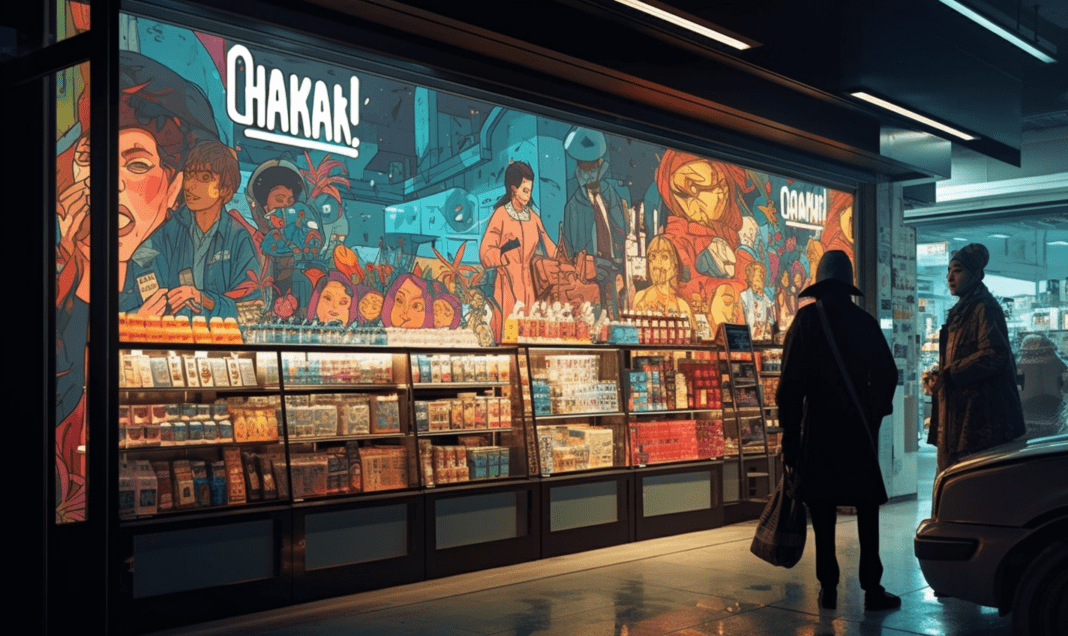In the ever-changing realm of marketing and consumer packaged goods (CPG), one thing stands clear: adaptability is paramount. As consumers continue to engage with brands across a multitude of touchpoints, marketers are faced with the formidable task of distinguishing themselves in an increasingly crowded media landscape. To succeed in this endeavor, they must deploy omnichannel strategies that allow them to connect with consumers throughout their entire journey. Enter Digital out-of-home (DOOH) advertising, a potent tool in the marketer’s arsenal, facilitating engagement with on-the-go shoppers when conventional channels fall short.
In today’s retail landscape, reaching the “active shopper” during their path to purchase and while they are in-store represents the ultimate challenge. The key lies in custom targeting and messaging, which have become imperative to drive awareness and influence real-time purchasing decisions on a grand scale. The advent of DOOH advertising has opened new avenues for CPG marketers, offering a unique opportunity to establish that vital connection.
Imagine this scenario: advertising on digital screens replacing the windows on freezer and refrigerator cases in your local supermarket. It might sound like something out of a science fiction novel, but it is a reality now. Cooler Screens, a pioneering force in the in-store digital media arena, has forged a groundbreaking collaboration with Kroger, heralding what is being hailed as the advent of the first-ever in-store upfront.
Cooler Screens is extending an invitation to marketers to reserve inventory for the fourth quarter of 2023 and quarterly slots throughout 2024, with applications set to be evaluated this July. Kroger, not content with merely being a retailer, now collaborates with advertisers to measure the impact of their campaigns on in-store sales.
The strategic move by Cooler Screens coincides with the growing allure of retail media networks. Traditional advertising channels are being challenged by digital media, which are now exploring the upfront model as a means to attract more advertising investments. Cooler Screens is actively seeking campaign proposals that not only make a difference in the customer experience but also yield substantial performance results. They encourage innovative utilization of their 4K, life-sized digital screens to craft engaging shopping experiences.
However, the journey into in-store digital media is not without its trials and tribulations. Cooler Screens recently found itself embroiled in a legal battle with Walgreens, one of its most prominent adopters. Cooler Screens is suing Walgreens for breach of contract, seeking substantial compensation totaling $200 million. The dispute arises from Walgreens’ decision to remove the screen technology from its stores.
This saga unveils a complex narrative, one that began as a promising collaboration under former CEO Stefano Pessina but took a different trajectory when Rosalind Brewer assumed the role of CEO. The lawsuit alleges that Brewer opted to remove the screens from stores, despite successful pilot programs and expansion plans.
Adding a layer of complexity to the situation, Cooler Screens was co-founded by Greg Wasson, Walgreens’ former Chairman, CEO, and Board member. Wasson, who played a pivotal role in negotiations with Walgreens, now finds himself a named litigant in the complaint against his former company.
The world of in-store digital media is rapidly emerging as the next frontier in the burgeoning retail media sector. Many startups in this space operate under retailer trade-offs, wherein technology companies shoulder the Capital Expenditure (CapEx) costs associated with integrating new devices in exchange for a share of advertising revenue.
While precise financial details of Cooler Screens’ arrangement with Walgreens remain undisclosed, it is evident that significant investments were made. Cooler Screens committed to investing $200 million in technology and deployment for a rollout across 2,500 stores, a commitment that ultimately faced hurdles.
The legal battle between the two parties unveils a convoluted web of alleged obstructive actions by Walgreens, from halting expansion plans and refusing approvals to data sharing issues. Cooler Screens contends that many technology-related issues were, in fact, a consequence of Walgreens’ aging refrigeration infrastructure.
As advertisers progressively allocate media budgets to retail media networks (RMNs), the challenges associated with standing out within this landscape are concurrently intensifying. RMNs have experienced substantial growth, with retail giants like Amazon, Walmart, Kroger, and others launching their own media offerings. McKinsey predicts that RMNs could amass a staggering $100 billion in ad spending by 2026.
Within this dynamic terrain, place-based digital out-of-home media has emerged as a game-changer. Unlike traditional on-platform or off-platform inventory, place-based inventory strategically positions itself in proximity to points of interest. In the retail context, this implies reaching consumers right before they enter a store, precisely when they are finalizing their shopping lists.
Place-based DOOH advertising offers a unique blend of advantages: viewability, contextual relevance, brand safety, and close proximity to the point of purchase, all while respecting consumer privacy. In a cluttered in-store environment, outside-the-walls advertising provides a clean, less distracting space to engage consumers.
The ascent of advertising within retail stores, driven by innovations such as DOOH, heralds a new era in the realm of marketing and consumer engagement. The battle for consumer attention and purchasing decisions has shifted to the aisles of supermarkets and the entrances of retail establishments.
As we navigate this dynamic landscape, one thing remains certain: adaptability and innovation will continue to be the guiding principles for marketers seeking to make a lasting impact. Cooler Screens’ legal battle with Walgreens serves as a stark reminder that the path to innovation is often laden with challenges. However, in-store retail media is here to stay, and those who harness its potential will emerge as the pioneers of the retail revolution.




